Monocular Cues are a very common device. For those of you who do not know what are cues, no need to worry. Simply put, cues are visual aids. Cues are the devices which help in understanding the depth of perception. The cues are generally categorised into two groups:
- Monoculars and
- Binoculars
In this article we will talk about the first category of cues that is: Monocular Cues. This post is monocular cues guide that offers you all information you should know about monocular cues.
Table of Contents
Monocular Cues Guide: What Is It?
Before going deep into the workings, types or usage of monocular cues, you need to be clear about the basic that is; ‘What are Monocular Cues?’
To answer this question you should first understand the concept of Depth Perception. Depth perception is the quality of perceiving the world in three dimensions, as humans do. The depth perception or the phenomenon of seeing the world in three dimensions, is based on many depth cues. The depth cues are broadly categorised into two groups ( as we have discussed earlier):
- Binocular Cues – Represents a 3D world with both eyes; and
- Monocular Cues – Represents a 2D world with one eye.
To elaborate it further you should understand the etymology of this term. The term ‘monocular’ refers to one eye. Whereas the term ‘Cues’ means signal. Monocular cues help you to see and understand the world with one eye. This is one of the best monocular scope that we have reviewed.
Monocular cues is a technical term. It refers to the overall perception. The monocular cues help you in seeing the world around you at a certain angle. The monocular cues give us a sense of depth, distance and three dimensions, with one eye at a time. These have a vital role in shaping the world we see around us.
There are many different types of monocular cues. We will talk at length about each of the types and will give you an in-depth insight into the functions and workings of each type of monocular cues.
Monocular Cues Guide: Types
1. Relative Size
This is the first type of monocular cues that we are going to discuss. This monocular cue is responsible for a sense of distance. Simply speaking, the relative size focuses on the distance of objects from us by observing their sizes. Suppose you have two objects that apparently appear to be of the same size. But, the relative size as the name suggests focuses on the size of the object like generally a large object seems to be closer to us and a small object appears to be distant.
For Example: All of you must have seen a plane. The actual size of a plane is huge. But if you look at a flying plane from the earth, it will appear very small to you. But, you do not think for a second that the plane’s actual size is also tiny. Your mind immediately understands that the plane is appearing to be small because it is far away from you. This process of judging the distance with respect to size, is called the relative size. The relative size helps you in
comparing the actual size of the object in your mind to the appearing size and immediately understand about the distance between you and the object. Check out our list of spotting scopes to get more idea about it.
2. Depth From Motion
Depth from motion is one of the most important types of the monocular cues. It comes into play when an object is moving in the direction of the observer. The mechanism involved in the depth of motion is the expansion of the projection of the object by retina with respect to time. This expanded projection leads us to believe that there is motion. This whole process is called the depth from optical expansion.
This phenomenon helps you in assessing the motion as well as the distance between you and the moving object clearly. Now you know why your mind simply relates sizes of objects to their respective distances. The depth from perception imparts us the ability to judge that the changing size of the object denotes its distance from the watcher.
3. Kinetic Depth Effect
Another major type of the monocular cues is the kinetic depth effect. To understand this term, let us first know it’s meaning. The word ‘Kinetic’ means relating to or resulting in motion. So, the kinetic depth effect plays a role in suggesting that objects in motion tend to appear three dimensional while the object in rest appears to be two dimensional.
To understand this clearly, let us perform a simple experiment. You will require the following items:
- Any Object (pen, ball, etc)
- A source of light ( bulb, torch, etc)
- A translucent screen
Now, you need to set up the three items properly.
- First of all keep the light source (light bulb, torch, etc).
- Then put the object at some distance from the source of light.
- Make sure that the object is not in motion
- Now arrange the screen in a fashion that the shadow of the object falls on it.
- Ensure that all three items: the source of light, the object and the screen are in straight line.
- Now turn on the light and sit on the other side of the screen to observe.
You will notice that the object that you placed in the path of light, cast its shadow on the translucent screen. The viewer will see a two dimensional pattern of two dimensional lines as the shadow of the object on the screen from the other side. But, if you bring the object to motion (kinetic), by rotating it, you will notice some changes. The 2D shadow will change into a 3D one.
Your visual system is designed to take all the essential information and process it to perceive a three dimensional world. The kinetic depth effect can be seen in both solid objects (like a ball) as well as items with outlines ( like a pen).
4. Aerial Perspective
Aerial perspective is another major type of a monocular cue. As the name suggests it is concerned with the depth perception of objects which are under the influence of air. In other words, the aerial perspective helps us in understanding the depth perception when objects are not in a position to be visible clearly. Mainly this happens due to the layers of air posing a hindrance. The objects which are at a distance from the observer appear to be blurry as compared to the objects which are closer to the observer.
To understand the aerial perspective more clearly you need to first be clear with the concept of how the atmosphere works in visibility of an object. The light which makes us see objects, has a tendency to scatter in the atmosphere. The objects which are actually far from us, possess a lower saturation and luminance contrast. This phenomenon is also known as the distance fog in day to day language. To make it even more clear you can consider the example of a computer game. There is always a contrast between the background and the foreground. The background has lower contrast in comparison to the foreground. This gives a sense of depth.
5. Linear Perspective
Linear perspective is a major type of the monocular cues. As almost all the other types of monocular cues help you to perceive depth and a three dimensional world, this on the other hand, helps you to view the depth while you are observing parallel lines. To understand this concept you must understand the depth perception of parallel lines. So, let us take an example; when you parallel lines scattered in an area like rail lines, you might have noticed that all the lines seem to converge at a distance.
Another valid example is of a road. If you pay attention, you will notice that roads are parallel and the farther you look the narrower they appear. So much so that it appears to converge at one single point at the farthest distance your eyes could see. This is what the linear perspective is. It gives you an idea of depth among plane and parallel areas.
6. Curvilinear Perspective
Curvilinear Perspective is a type of monocular cues. Curvilinear Perspective gives you a better experience of yourself in a 3 dimensional world. To understand it properly consider an example of a picture taken with a fisheye lens. When you take a photo with the fisheye lens, you get a curved image of the surroundings.
7. Interposition
This comes into play when two objects overlap each other partially. Interposition is a type of monocular cues which helps us to perceive depth in cases when one object slightly covers the other. When one object overlaps the other, in a three dimensional world, it seems to be behind each other and the one in the front seems to be closer than the one in the back. This phenomenon is known as interposition.
8. Motion Parallax
Motion parallax is a type of monocular cues in which the objects which are closer to you seem to pass by quickly as compared to those which are farther to you. In simple terms, the farther something is the slower it appears to move. A classic example of this can be noticed when you travel with a car or train or any other vehicle.
You might have noticed that the objects on the way like trees, buildings, electric poles etc pass by you while you go on. It appears that the objects which are closer to you at one particular moment pass by quickly whereas, the object which is farther to you at that exact time, takes a little bit of more time in passing by, despite both objects being stationary and you maintaining a steady speed throughout. This phenomenon is known as the motion parallax.
If you have information about the velocity and direction of movement, then you can know about the absolute depth with the help of the motion parallax.
9. Texture Gradient
Texture gradient is another type of the monocular cues. As the name suggests,the texture gradient deals with the object’s texture and the role of an object’s texture in the viewer’s perception of depth and distance. The objects which are closer to you are clearly visible. You can easily see the design, pattern and texture of that object. But, objects which are far away, these details will not be visible to you.
For example: If you see a road then the part where you are walking or standing will appear very clear to you. You will be able to see all the pebbles, dust, design and texture of the road at that particular point. But overall the road will appear plain to you at a distance.
10. Lighting And Shading
It is quite clear from the name that this type of monocular cues involve light and shadow. The lighting and shading imparts a sense of shape as well as the location of the object to the observer. This phenomenon works when the light falls and gets reflected from an object. The pattern in which the light falls and reflects off an object and the shadow is formed eventually gives the observer a sense about the shape of the object and their position with respect to the source of light.
Monocular Cues Guide: Uses
- Monocular Cues help us in perceiving the world as a 3 dimensional entity.
- Monocular Cues are used to determine the depth perception of the objects around us.
- Since it is monocular it involves one eye.
- Monocular Cues help us in understanding about the size and shape of the object.
- Monocular Cues also allow us to understand about the texture of the object.
- Monocular Cues enable us to determine the motion of the object.
- Monocular Cues help in determining the distance between the observer and the object.
- Monocular Cues are used in virtual reality like computer games etc, for an enhanced sense of scale, size, depth and height.
Final Thought
This monocular cues guide is more than enough for the introduction to the monocular cues. It not only helps us in perceiving the world in three dimensions, but also helps in judging the distance, shape, size, distance, texture etc of the various objects around us.

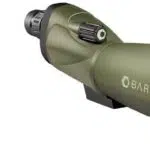

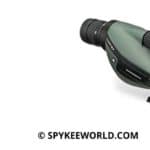
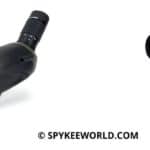

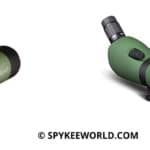

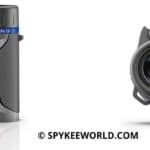
Leave a Reply